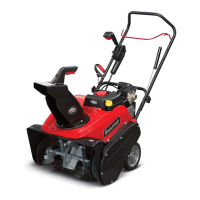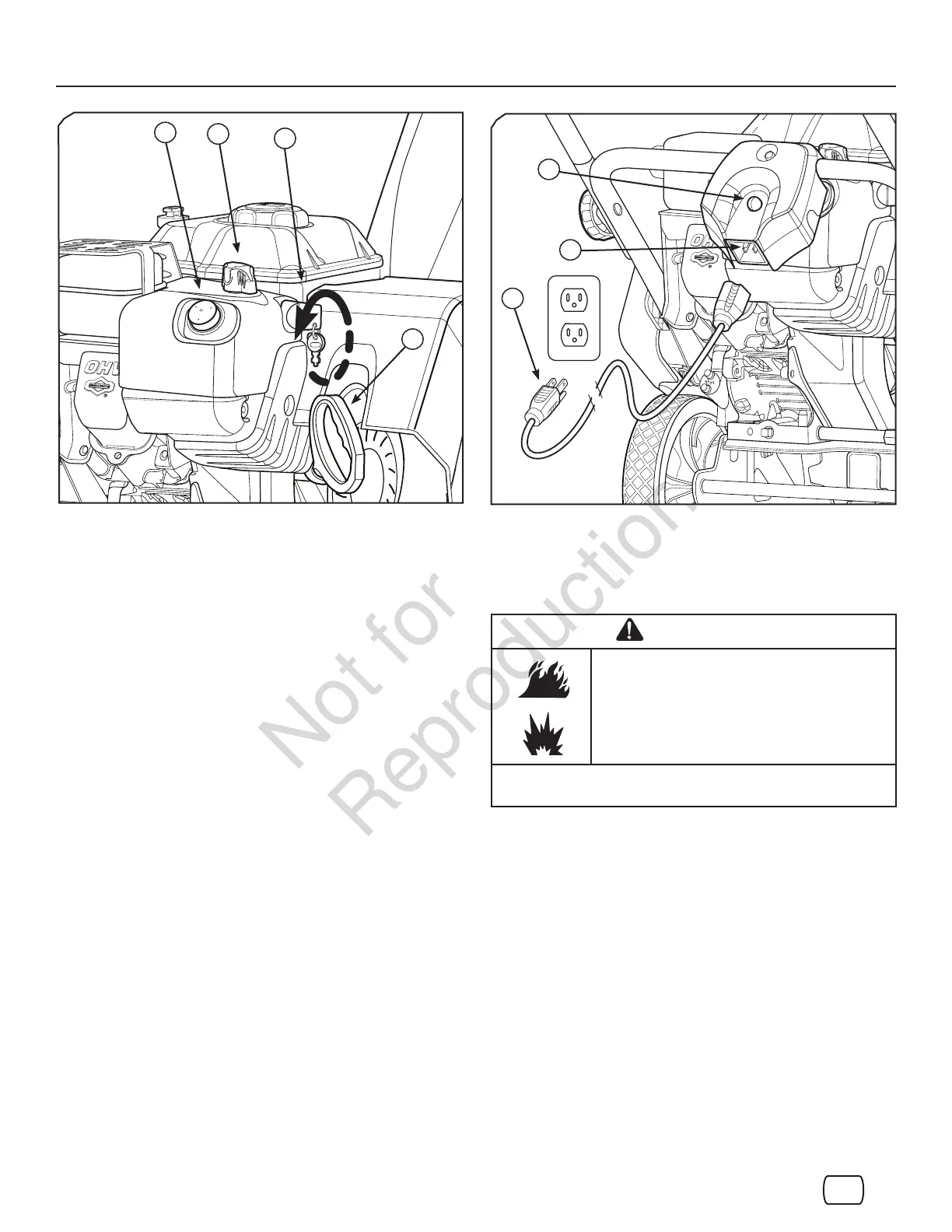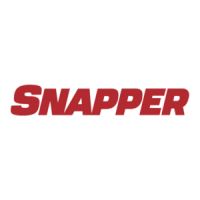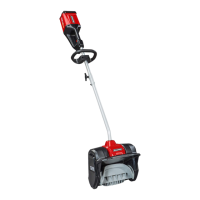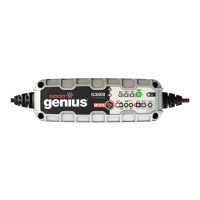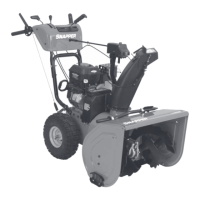11
Operation
4. Turn the choke control (B) to the closed position.
NOTE: Do not close the choke control to start a warm engine.
5. Press the primer button (C) two times.
NOTE: Do not press the primer button to start a warm engine.
6. Rewind start: Firmly hold the starter cord (D). Pull the starter
cord slowly until resistance is felt, then pull rapidly.
7. Electric start: First connect the power cord (not supplied)
(E, Figure 3) to the starter receptacle (F) and then into a wall
receptacle. If an additional power cord is required, ensure it is
a three-conductor cord.
8. Electric start: Press the starter button (G). After the engine
starts, disconnect the power cord from the wall receptacle first
and then from the starter receptacle.
NOTICE: To extend the life of the starter, use short starting
cycles (five seconds maximum). Wait one minute between
starting cycles.
9. As the engine warms up, move the choke control (B, Figure 2)
to the open position.
NOTE: If the engine does not start after three attempts, see
Troubleshooting.
Figure 2
B
C
A
D
E
G
F
Figure 3
WARNING
• Do not choke the carburetor to stop the engine.
Gasoline and vapors are extremely flammable
and explosive.
Fire or explosion can cause severe burns or
death.
1. Turn the ON/OFF key (A, Figure 2) to the OFF position or
remove the Push/Pull key, if equipped.
2. Keep the key in a safe place out of the reach of children. The
engine cannot be started without the key.
Stop the Engine
en
